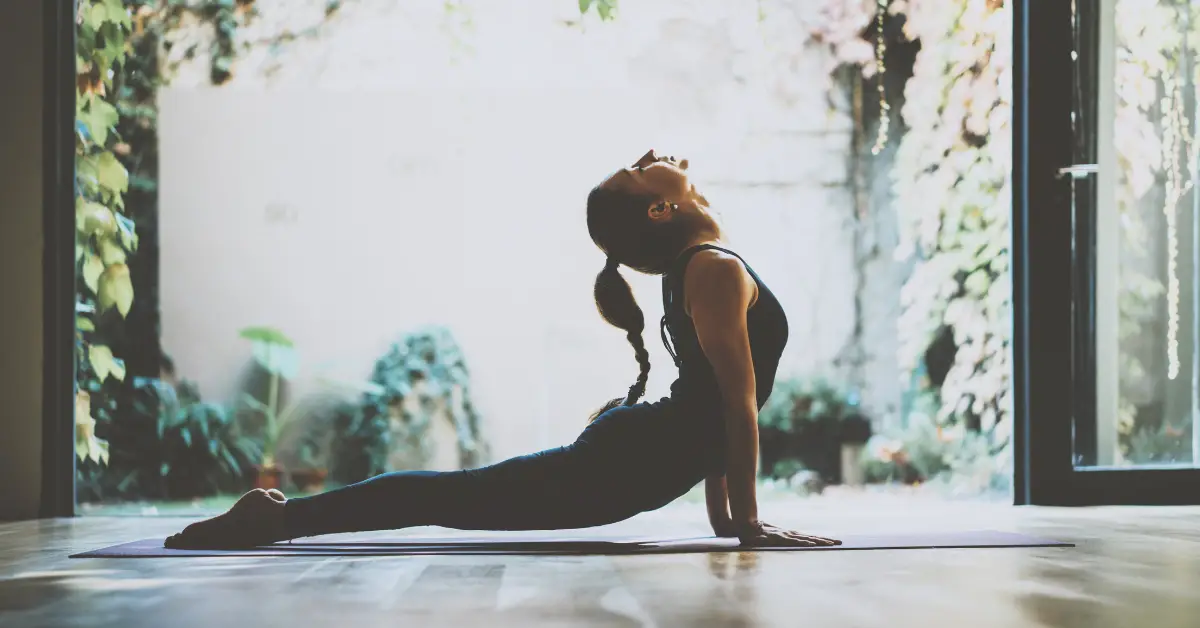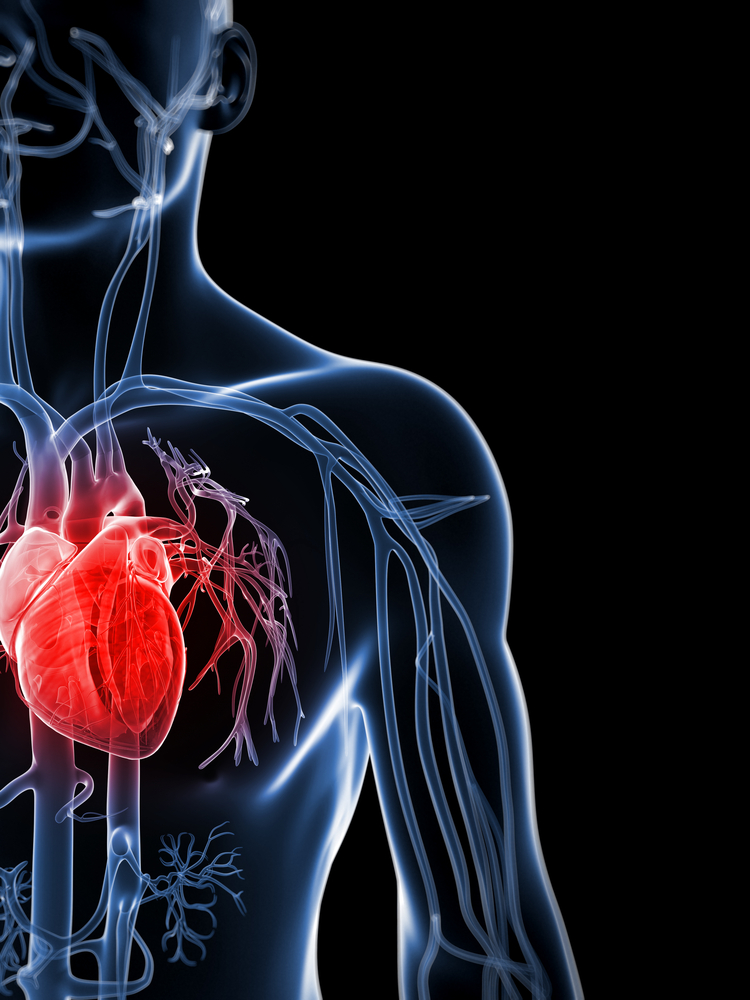Yoga is a practice that has been around for centuries, proven to have many benefits, and it can help with thyroid health in many ways. However, it is important to know which type of yoga poses are best for your specific needs.
The thyroid gland is a butterfly-shaped organ situated in the front of the neck just below the Adam’s apple or larynx. Its primary function is to release thyroid hormones into the bloodstream, which are then carried to every cell and tissue in the body.
Thyroid hormones control metabolism and help regulate organ functions such as:
- Heart rate
- Central nervous system
- Weight management
- Muscle strength
- Lung function
- Body temperature
- Cholesterol levels
The thyroid is part of the endocrine system, a complex network of glands and organs that release hormones targeting specific functions within the body. It produces two main types of hormones: Triiodothyronine (T3) and Thyroxine (T4), which are both made from iodine, an element that is found in certain foods. [1, 2]
To find out more about thyroid and diet, subscribe to Dr. Nandi’s free weekly newsletter.
Common Thyroid Problems
Thyroid conditions are a common problem. They can be triggered by an underlying cause or may develop because of sudden changes in your lifestyle or environment. These conditions can have a huge impact on your mental and physical health.
The most common thyroid problems are hyperthyroidism and hypothyroidism. Thyroid hormones are necessary for metabolic function in every cell of your body. A deficiency can adversely affect your metabolic rate, reproduction, hormone production, and brain function — as well as musculoskeletal, psychological, and cardiovascular health. Many factors can negatively impact healthy thyroid function, including stress, nutrient deficiencies, lifestyle factors, environmental toxins, and inflammation.
Hypothyroidism
The human body does not produce iodine naturally. Therefore, you must consume a balanced diet with adequate amounts of iodine, or you may become deficient.
When the body becomes deficient in iodine, it can cause hypothyroidism, a condition in which the body cannot produce enough thyroid hormones. When this happens, the following issues or health problems can occur: [2]
- Interrupted sleeping patterns
- Tiredness and fatigue
- Poor concentration
- Dry and flakey skin and hair
- Depression
- Cold intolerance
- Frequent, heavy periods
- Joint and muscle pain
- Stiffness
Hyperthyroidism
In contrast, hyperthyroidism occurs when your thyroid gland produces excessive amounts of thyroxine (T4). Hyperthyroidism, also known as an overactive thyroid, is a condition that can cause a range of problems such as: [3]
- Anxiety
- Irritability or mood swings
- Nervousness, restlessness, or hyperactivity
- Hot sweats or sensitivity to high temperatures
- Tremors
- Loss or thinning of hair
- Weight loss
- Irregular heartbeat
- Missed or light menstrual periods
Other thyroid problems include:
- Goiter – enlargement of the thyroid gland
- Thyroid cancer – growth of abnormal cells in the thyroid gland
- Thyroid nodules – lumps in the gland
- Thyroiditis – swelling of the thyroid

Yoga Poses That Can Stimulate Your Thyroid Health
Practicing yoga can have many mental and physical health benefits. It has been shown to relieve stress and anxiety and boost immune function. For patients living with chronic health conditions or recovering from surgery or illness, yoga may be a vital part of recovery.
Some studies have also shown that certain yoga poses can stimulate the thyroid gland and help it to function more efficiently. [4, 5]
Here are six yoga poses that stimulate thyroid function:
Setu Bandhasana or Bridge Pose
- Lie on your back with your knees bent and your feet planted firmly on the ground.
- Keep your legs hip-width apart and your arms resting by your sides.
- Press your feet onto the floor, and lift your hips.
- Apply pressure with your arms and shoulders on the ground and slowly lift your lower, middle, and upper back. Using your legs and buttocks, allow yourself to raise your hips higher.
- Hold this position for a few seconds, then return to the starting position.
Bhujangasana or Cobra Pose
- Lie on your stomach with your feet shoulder-width apart and hands next to your body. Your forehead should be resting on the ground.
- Place your hands on the ground, underneath your shoulders, and slowly raise your upper body and head. Your arms should be bent at the elbow.
- Extend your arms and arch your neck slightly backward, and look up.
- Your elbows should be in line with your body and stretched so that there is no pressure on your waist.
- Stay in this position for 4-5 seconds, then return to the starting position.
Halasana or Plough Pose
- Lie on your back with your hands resting by your sides.
- Inhale and lift your legs off the floor up to a 90-degree angle.
- Using your shoulders as support, use your hands to lift your hips off of the floor.
- Bring your toes over your head so that your body is at a right angle (90 degrees) to the floor.
- Hold the position for a few breaths and return to the starting position.
Matsyasana or Fish Pose
- Lie on your back with your knees bent and feet planted on the floor.
- Inhale, lift your pelvis off the floor and move your palms underneath your buttocks.
- Press your forearms and elbows against the floor.
- Hold down your shoulder blades and lift your upper body and head off the floor.
- Raise your chest as high as you can to arch your back.
- Hold this pose for a few seconds, and then relax.
Navasana or Boat Pose
- Sit on the floor with your knees bent with your feet and palms resting on the floor.
- Lift your feet, keeping your lower legs (below the knee) parallel to the floor.
- Angle your upper body backward slightly while keeping your spine straight.
- Make a V shape with your upper torso and legs.
- Extend your arms in front of you, parallel to the floor, with your palms facing downwards.
- Tense your core muscles and pause for a few breaths.
Viparita Karani or Legs-Up-the-Wall Pose
- Sit down on the ground next to a wall.
- Lay on your back and lift your legs until they are flat against the wall. Your legs should be at a 90-degree angle to your body.
- Place your hands by your side and relax.
- Take a few deep breaths and repeat the pose.
A Healthy Lifestyle to Keep You Fit
Maintaining a healthy lifestyle can help prevent many adverse medical conditions. An essential part of that lifestyle is keeping active.
Yoga, as an activity, helps lower stress and anxiety and can bolster metabolism that stimulates the thyroid gland to function effectively. It’s also essential to eat a balanced diet with plenty of iodine. This ensures that you get sufficient amounts of thyroid hormones T3 and T4 and provide your body with enough energy.
The Health Hero Pharmacy has science-backed Thyroid Support supplements that help maintain thyroid function and more.
To learn more about how a healthy lifestyle can promote longevity and help fight thyroid disease, subscribe to Dr. Nandi and his fabulous newsletter today.

My Personal RX
An estimated 20 million Americans have some form of thyroid disease. Up to 60 percent of those with thyroid disease are unaware of their condition. Women are five to eight times more likely than men to have thyroid problems. One woman in eight will develop a thyroid disorder during her lifetime.
Consider the following if you are concerned about your thyroid:
1.Get Informed: Understand more about thyroid diseases and their symptoms. Irritability is one of many potential indicators, others can include weight changes, fatigue, hair loss, changes in heart rate, and more. The thyroid gland plays a key role in our body’s metabolism and energy regulation, so disturbances can have a wide range of effects.
2.Monitor Symptoms: Keep a diary of your symptoms. This could be helpful for your healthcare provider in identifying patterns or triggers and for making a diagnosis. Be sure to note not only emotional changes like irritability but also physical changes like rapid weight loss or gain, heart palpitations, or changes in your menstrual cycle.
3.Regular Medical Checkups: Regular medical checkups are always recommended. If you have symptoms that suggest a thyroid disorder, your healthcare provider can conduct blood tests to measure your thyroid hormone levels.
4.Healthy Lifestyle: Maintain a healthy lifestyle which includes a balanced diet and regular exercise. Certain foods are known to affect thyroid health, including those rich in iodine and selenium. Download a free copy of my Superfood Cookbook for recipes ideas.
5.Reduce Stress: Chronic stress can have significant effects on your thyroid function. Consider stress reduction techniques such as yoga, meditation, or other relaxation exercises.
6.Consider a Supplementation: My Thyroid Support supplement is a comprehensive formulation that provides a blend of nutrients and botanicals working in synergy to support thyroid health.
Remember, if you’re experiencing irritability along with other symptoms that suggest a thyroid issue, it’s important to seek medical advice. Only a healthcare professional can diagnose and suggest a treatment plan for thyroid disorders.

Sources
- How does the thyroid gland work? – InformedHealth.org – NCBI Bookshelf
- Thyroid Gland Overview: What to Know About This Endocrine-Hormone Powerhouse
- Hyperthyroidism | Graves’ Disease | Overactive Thyroid | MedlinePlus
- The Effect of Yogic Practices on Thyroid Functions
- Therapeutic effects of Yoga on Thyroid Disorders











 Subscribe to Ask Dr. Nandi YouTube Channel
Subscribe to Ask Dr. Nandi YouTube Channel










